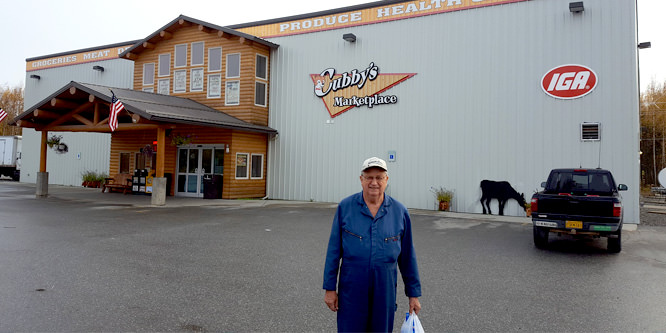Will independent grocers turn it around in 2017?
DISCUSSION

Photo: Cubby's Marketplace, Talkeetna AK/Facebook
May 26, 2017
Operating independent grocery stores has never been for those who shrink from formidable odds. When it comes to today’s independents, that means going up against chain store giants such as Walmart and Kroger while dealing with changes in technology and consumer shopping behavior, not to mention deflation in key product categories and increased competition for labor and the associated costs that go with it.
According to the “Independent Grocers Financial Survey,” recently released by the National Grocers Association (NGA) and FMS Solutions (FMS), 2016 was a challenging year for the small guy.
Sales were down 1.62 percent in 2016 from 2015. Food deflation affected grocers in key categories, including dairy and meat, which hit independents squarely in the bottom line as net profits fell to 0.98 percent compared to 1.44 percent in 2015.
The survey of more than 100 grocers operating stores in 33 states found that independents managed to hold the line on margins at 27 percent. Labor and benefits climbed to 14.84 percent of sales last year, the highest level tracked to date.
Lower unemployment rates across most of the country helped drive up labor costs (12.63 percent of sales) while leading to higher turnover among associates. Turnover at independent grocers averaged 48.9 percent among part-time workers and 17.1 percent among full-timers.
“Low profit margins and constantly changing consumer preferences make it challenging even for the best operators,” said Peter Larkin, president and CEO of NGA, in a statement. “But as independents continue to invest in their local communities and work diligently to stay ahead of rapidly changing consumer trends, they are differentiating themselves in a fiercely competitive marketplace to become shoppers’ stores of choice.”
Independents identified as “profit leaders” among their peers averaged net profits of 4.70 percent before taxes. This group, which represents stores in the top 25th percentile, improved net profit performance in 2016. Profit leaders, according to NGA and FMS, tend to operate slightly larger stores generating a greater number of weekly transactions and higher average rings. These stores focused on fresh foods while aggressively managing inventories; reinvesting in their businesses while limiting debt.
- 2017 Independent Grocers Survey Released – National Grocers Association
- Independent Grocers Financial Survey (Executive Summary) – National Grocers Association
DISCUSSION QUESTIONS: Is it more difficult to be an independent grocer in 2017 than it has in the past? What are the keys for today’s indies looking to differentiate from the wide variety of rivals competing in the grocery space today?
Retail-Tech Specialist Advisor
President, b2b Solutions, LLC
Retail Industry Advisor, Softtek
Professor of Food Marketing, Haub School of Business, Saint Joseph's University
President, The Ian Percy Corporation
Chief Executive Officer, The TSi Company
President, The Ian Percy Corporation
Chief Executive Officer, The TSi Company
Strategy Architect – Digital Place-based Media
Co-founder, CART (Center for Advancing Retail & Technology)
Managing Director, RAM Communications
President and CEO, ProLogic Retail Services
Owner, Tony O's Supermarket and Catering
President, The Ian Percy Corporation
Chief Amazement Officer, Shepard Presentations, LLC
CEO, Co-Founder, RetailWire
Owner, Tony O's Supermarket and Catering
sales management consultant
Global Retail & CPG Marketing, IBM
CFO, Weisner Steel
Sr Director, Worldwide Enterprise Product Marketing, InfoVista